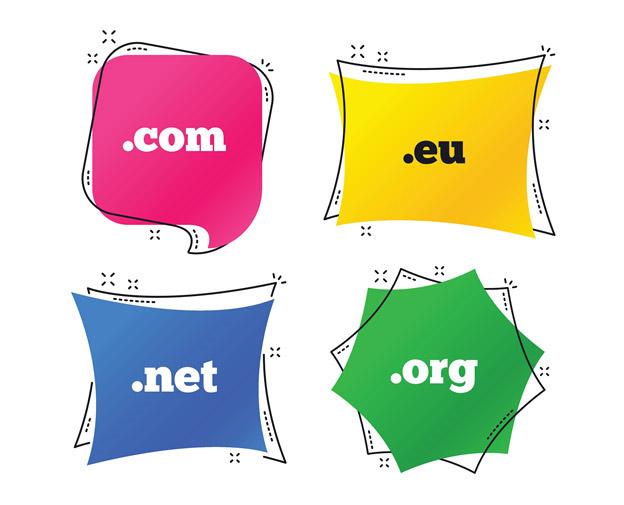
The debate between using subdomains and subdirectories for SEO purposes has been ongoing. Some suggest that subdomains can help with boosting search engine rankings, while others maintain a preference for subdirectories instead. Ultimately, the choice is up to you depending on your site’s specific needs.
In this article, we take a look at the ins and outs of a domain, a subdomain, and a subdirectory, and how each of these impact your SEO.
WHAT IS ROOT DOMAIN?
To better understand the nuances of a subdomain and a subdirectory, it helps understand what a domain is and its pieces.
A domain, in the simplest terms, is an internet address that identifies and directs users to a website. Domains need to be unique so they can serve as the direct address for each website. Much like each home needing its own individual address, domains are an integral part of locating websites on the internet.
A domain isn’t as simple as some might think, though. It is multiple parts and can experience multiple levels of personalization if you want.
Let’s work backward through a domain.

Example of TOP-LEVEL DOMAINS (TLD)
The definition of top-level domain, or TLD, is the last part of a basic domain name. On our website, the TLD is the “.com” at the end. However, there are quite a few TLDs available for use at the end of the domain name. Some of the more common ones include:
- .com
- .net
- .org
- .edu
There are more expanded options now available that can help make URLs stand out and be more memorable for visitors. Businesses often use TLDs such as ‘.agency’ or ‘.accountant’, however it is still best to keep them as simple and understandable as possible for search engine optimization purposes.
SECOND LEVEL DOMAINs (SLD)

The next part of a domain name is called the second-level domain (SLD). This is commonly the central portion of a domain name. It’s often the name of the company the website belongs to or a primary keyword of their site.
Using our website as an example, the SLD in www.firestarterseo.com is “firestarterseo,” our company name. It also functions as a primary keyword for the site and is memorable and sensible enough for potential clients to locate us on the internet.
When selecting a domain name, it is important to consider how it will affect your search engine rankings, as this will play a role in the success of your website or business. While it is just one of many ranking factors, following best practices when deciding can help to limit your choices and make sure you are setting yourself up for success.
How does SUBDOMAIN Work?

Since we are working backward piece by piece through a domain name, the next part is the subdomain. A subdomain is the “www.” at the front end of the entire domain.
Subdomains work as a powerful and flexible part of the internet. They allow organizations and web designers to customize their domain names by adding a special prefix before their main domain name. For example, “www” is often used as a subdomain, but it’s becoming less necessary in modern times. Subdomains offer a lot of versatility when it comes to website design and give organizations more control over how they organize their content online. However, there is still some debate among experts about how much benefit these extra features can bring.
SUBDOMAIN FLEXIBILITY
Google used to use subdomains extensively, such as having maps.google.com for their maps service. However, they have since restructured their URLs to use subdirectories instead, such as www.google.com/maps. This illustrates how companies can take advantage of the extra flexibility that subdomains offer to maximize the effectiveness of their website or web-based services.
Currently, this serves as a better example of the rise and fall of their usefulness according to a search engine’s functioning. As algorithms and their scope of understanding changes, so does the use of a subdomain.
WHAT ARE SUBDIRECTORIES?

A subdirectory can also be called a subcategory or a subfolder, all of which are mutually common names.
Subdirectories give you a means of conveniently organizing your website’s URLs so that the site architecture makes sense and is simple to move through for a search engine crawler. Your website doesn’t only have one URL; instead, it should have an organizational pattern of URLs.
Using our website as an example again, www.firestarterseo.com is the primary domain name. To get from there to this article, you would click on our blog page, which would send you to www.firestarterseo.com/category/articles/. That sends you to a page that allows you to search throughout the articles. In that case, “category” and “articles” are subdirectories or subfolders.
When you click on the link for this article, you go to a different subfolder made individually for each article. In this example, it’s www.firestarterseo.com/the-relationship-between-seo-and-subdomains/. The entire block between the “/” is the subfolder, allowing you to use the primary keywords in the article’s title to better your rankings.
If you haven’t already noticed, it’s the “/” mark that denotes the arrival or end of another subcategory.
Using A SUBDOMAIN vs. Subfolder
There are times when it is appropriate to use a subdomain, and others when it doesn’t make enough sense. Sometimes, using subdomains can help boost your SEO, while at others, it can negatively impact it dramatically.
A subfolder, however, is a less risky option to take when you want to better organize your site as it continues to grow and develop. They keep all of your information, backlinks, and interactions in one place, under the same domain.

When to use a SUBDOMAIN
You should only use a subdomain when you are ready to invest plenty of time and effort into it, developing its own SEO strategy and setting it up apart from your primary site.
To help clear this issue up for you and whether they can help your SEO, here are some examples of when to use a subdomain.
- When you want to rank for different keywords than you do with your primary domain.
- To target a specific market, a niche inside of the market you primarily focus on.
- For a site to reach a different location or serve another language beyond your primary website’s scope.
- To better break up very large sections of a website. For example, many large corporations or companies have their support pages and forums under a subdomain such as microsoft.com. From here, they break the support pages into subfolders.
There might be other times when it makes sense to use subdomains. If you are unsure, the best thing to do to avoid unnecessary risk with your analytics is to consult SEO experts.
When to use A SUBFOLDER
There are certain times when it makes much more sense to use sets of subfolders than it does to place everything in separate domains. They are also more convenient to set up with much hassle. Examples of when you should use a subfolder include:
- When you want all your analytics and interactions to stay under the same domain.
- If you want an effective and convenient way to set up your site’s overall structure to keep it crawlable and easy to categorize.
- You are trying to establish and strengthen a website’s overall authority with high-quality content and well-developed pages.
- Keywords relating to your niche market are all very similar and wouldn’t benefit from being separated, i.e., if you would only create competition for yourself by creating a subdomain for that set of keywords.
Subfolders, or subdirectories, are more commonly used than subdomains at this point. They will likely remain so, at least until search engines adapt to cataloging subdomains slightly differently than they do now.
Are SUBDOMAINs Bad FOR SEO?
Many of the positive aspects involved in using subdomains can also flip on you and cause issues for SEO. You need to handle them with skill to ensure they work the right way for you.
- As a unique website that can create more competition for your adversary sites, it can also put you as competition against yourself. Instead of benefiting from the discoveries and search results on a primary site, these results will be split between the subdomains.
- They require an SEO strategy independently from the strategy you had been using for your primary site.
- When a new subdomain is established, it is akin to starting from square one. You will need to begin acquiring backpacks other than those that were acquired for your primary site.
Overall, the challenges of using a subdomain can be summed up by saying that your analytics will be entirely split between the site. It is exactly as though you had two websites running with somewhat of a similar focus.
How do Subdomains help SEO
There are plenty of ways that a subdomain functions as a positive part of your SEO strategy. Some of the advantages of subdomains include:
- Search engines categorize subdomains as unique websites that are not related to the primary domain. They create more parent domains that can show up on search engine result pages. When that happens, it functions to further push your competition down the list of results and increase your chances of being found.
- Being viewed as a separate category also gives you the benefit of enhancing your authority on a search engine, increasing your rankings since they enhance your stance of authority.
- Subdomains allow you to target a specific set of new keywords separate from your primary domain. Doing so can enable you to target niche markets within your business’s broader spectrum or even extend to another country.
- It describes the exact purpose of that part of your website (although, to reiterate, search engines will catalog them as separate websites.) For visitors, this can be helpful if they want to know that they have found the right web location.
- If done properly, a subdomain can be indexed very quickly, benefiting from the main domain’s good “reputation.”

SHOULD YOU USE SUBDOMAINS?
Although it would make it easier if we could make a recommendation one way or another, since every business is different, there is rarely a black and white solution when it comes to questions relating to analytics and SEO choices. This dilemma only increases when you consider the fact that search engines are constantly getting tweaked, and their algorithms never stay the same for too long.
Consider reaching out to a company that specializes in SEO and website optimization services. With their knowledge and expertise, they can help make an informed decision on what will be most beneficial for your business.


